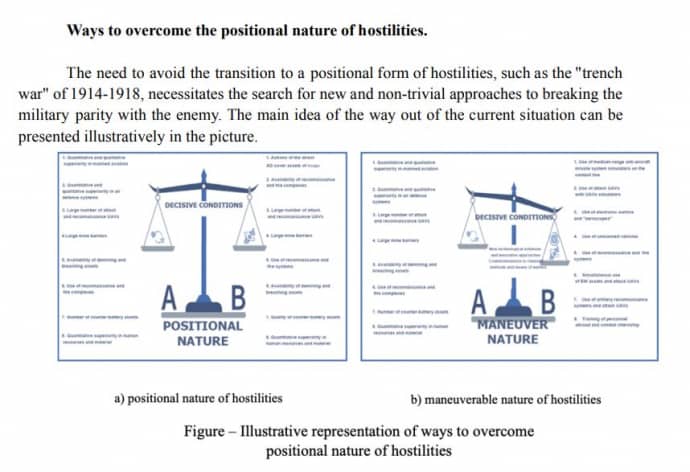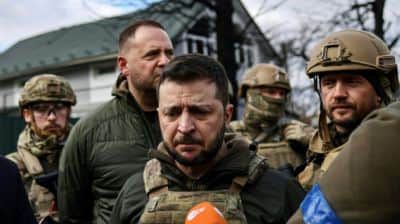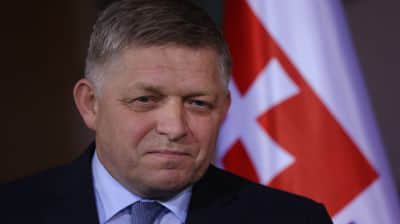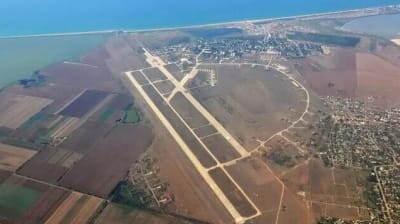Ukraine's Commander-in-Chief names ways out of positional war and suggests keeping Cold War in mind
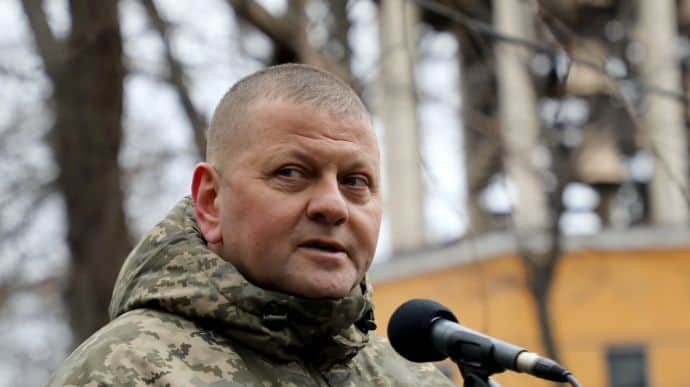
Valerii Zaluzhnyi, Commander-in-Chief of the Armed Forces of Ukraine, believes that the introduction of modern technologies in the management of troops, as well as the accumulation of weapons, primarily domestically produced ones, as was done during the Cold War, is key to overcoming the positional war.
Source: Valerii Zaluzhnyi in an essay for The Economist
Quote: "The transition of the war to a positional form leads to its prolongation and carries significant risks for both the Armed Forces of Ukraine and the state as a whole. In addition, it is beneficial to the enemy, who is trying in every possible way to reconstitute and increase its military power.
To get out of the positional form at the current stage of warfare, first of all, it is necessary to: gain air superiority; breach mine barriers in depth; increase the effectiveness of counter-battery and electronic warfare; create and prepare the necessary reserves.
It should be taken into account that the widespread use of information technology in military affairs and the rational organization of logistics support play a significant role in finding a way out of the positional form of warfare.
The need to avoid transitioning from a positional form to a manoeuvrable one necessitates searching for new and non-trivial approaches to break military parity with the enemy."
Details: Zaluzhnyi notes that the fighting on the line of contact began to become positional in the summer of 2023.
He discusses in detail the steps needed to overcome the positional struggle in terms of gaining air superiority, mine-clearance, counter-battery and electronic warfare.
Zaluzhnyi also emphasised that increasing the effectiveness of command and control is essential to overcome a positional war.
This can be achieved through the widespread use of modern information technologies in the command and control system, which will ensure the formation of a single information space, the creation of conditions for information superiority, and the effective coordination of subordinate forces.
As a result, this will allow Ukraine to stay ahead of the Russians in terms of situational awareness, make decisions faster, and generally ensure the achievement of the goal of the operation in a positional war.
Zaluzhnyi noted that the key components that will influence the achievement of superiority in situational awareness are the processes of organising communication, collection of intelligence, surveillance and reconnaissance.
Zaluzhnyi also stressed that success in implementing ways to change the nature of war and achieve goals is significantly impacted by the rational organisation of logistics support for the Ukrainian Defence Forces.
Repulsing the full-scale armed aggression of the Russians and conducting defensive and counteroffensive operations requires a huge amount of resources: human, mobilisation, financial, material, etc.
Quote: "The experience of the Russian-Ukrainian war testifies to the actualisation of almost forgotten concepts, for example, such as the accumulation of stocks of missiles and ammunition, and other logistics assets. After the end of the Cold War, the collapse of the Soviet Union and the Warsaw Pact states, this concept lost its relevance, but today it has become important both for the enemy and for our state."
Details: Zaluzhnyi notes that Russia has been preparing for war, so it is able to maintain an advantage in weapons and equipment, missiles and ammunition for a considerable time, and the capabilities of its military industry are growing despite Western sanctions.
The Armed Forces of Ukraine receive significant logistical assistance from partner countries, but given the increased intensity of the average daily consumption of missiles and ammunition, it is impossible to accumulate them in the amounts needed.
Partner countries and NATO member states are currently significantly increasing their arms and ammunition production capacity, but this is quite a lengthy process.
According to various estimates, it takes at least a year to roll out large-scale production of weapons and equipment, missiles and ammunition, and other logistics to get started, and some types of weapons take two years.
In order to continue to effectively destroy Russian ammunition storage points, disrupt supply chains and increase the distance of transportation of ammunition and other logistical assets, the Armed Forces need to adopt long-range missiles, preferably of domestic manufacture.
Zaluzhnyi identifies the main ways to improve the efficiency of logistics support as the development and capacity building of the Ukrainian defence industry; the creation and development of an asymmetric arsenal of weapons and equipment in Ukraine; the creation, production and deployment of new types of weapons.
At the same time, when planning and organising logistics support, the Russians’ capabilities to attack mobile and stationary components of logistics support assets have to be taken into account.
Background:
- In an article for The Economist, Zaluzhnyi stated that Russia's war with Ukraine is entering the stage of "positional" warfare, which requires high technology to win. He named five priorities: air superiority, electronic warfare, counter-battery, mine and explosive technology, and building up mobilisation reserves.
- In an interview with The Economist, Zaluzhnyi also acknowledged that the situation on the front line has reached a deadlock and that without a combination of new technologies to defeat the Russian army, Ukraine faces protracted trench warfare that could exhaust the Ukrainian state.
Support UP or become our patron!
